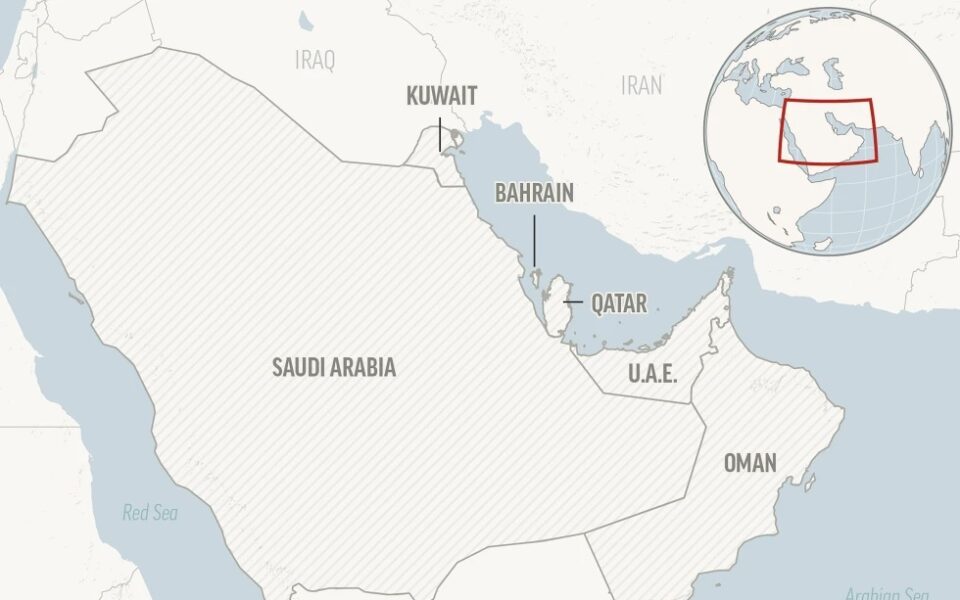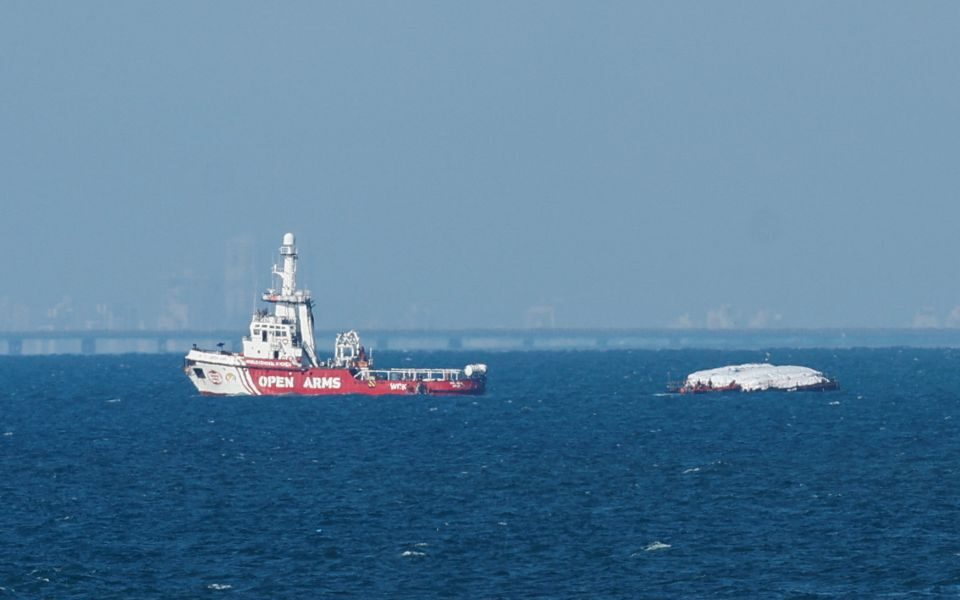Greek-owned tanker in Gulf of Oman boarded by men in military uniforms


An oil tanker once at the center of a crisis between Iran and the United States was boarded in the Gulf of Oman by “unauthorised” people in military uniforms early on Thursday morning, an advisory group run by the British military and a private security firm warned.
Details remained unclear in what was apparently the latest seizure of a vessel in the tense Middle East waterways. However, suspicion immediately fell on Iran as the ship was once known as the Suez Rajan and had been involved in a yearlong dispute that ultimately saw the US Justice Department seize 1 million barrels of Iranian crude oil on it.
The apparent seizure also comes after weeks of attacks by Yemen’s Iranian-backed Houthi rebels on shipping in the Red Sea, including their largest barrage ever of drones and missiles launched late Tuesday. That has raised the risk of possible retaliatory strikes by US-led forces now patrolling the vital waterway, especially after a United Nations Security Council vote on Wednesday condemning the Houthis and as American and British officials warned of potential consequences over the attacks.
The British military’s United Kingdom Maritime Trade Operations, which provides warnings to sailors in the Middle East, said Thursday’s apparent seizure began early in the morning, in the waters between Oman and Iran in an area transited by ships coming in and out of the Strait of Hormuz, the narrow mouth of the Persian Gulf through which a fifth of all oil traded passes.
The UK military-run group described receiving a report from the ship’s security manager of hearing “unknown voices over the phone” alongside with the ship’s captain. It said that further efforts to contact the ship had failed and that the men who boarded the vessel wore “black military-style uniforms with black masks.”
The private security firm Ambrey said that “six military men” boarded the ship, which it identified as the oil tanker St. Nikolas. It said that the men had covered the surveillance cameras as they boarded.
The St. Nikolas was earlier named the Suez Rajan, associated with the the Greek shipping company Empire Navigation. Attention began focusing on the Suez Rajan in February 2022, when the group United Against Nuclear Iran said it suspected the tanker carried oil from Iran’s Khargh Island , its main oil distribution terminal in the Persian Gulf. Satellite photos and shipping data analyzed at the time by The Associated Press supported the allegation.
For months, the ship sat in the South China Sea off the northeast coast of Singapore before suddenly sailing for the Texas coast without explanation. The vessel discharged its cargo to another tanker in August, which released its oil in Houston as part of a Justice Department order.
In September, Empire Navigation pleaded guilty to smuggling sanctioned Iranian crude oil and agreed to pay a $2.4 million fine over a case involving the tanker.
Empire Navigation, an Athens-based firm, did not immediately respond to a request for comment.
The US Navy’s 5th Fleet, which patrols the Mideast, did not immediately respond to a request for comment over the incident. Iran’s state-run IRNA news agency, citing foreign reports, mentioned the boarding but did not say anything more.
Iran’s mission to the United Nations also did not immediately respond to a request for comment.
After the vessel, then-Suez Rajan, headed for America, Iran seized two tankers near the Strait of Hormuz, including one with cargo for major US oil company Chevron Corp. In July, the top commander of the Revolutionary Guard’s naval arm threatened further action against anyone offloading the Suez Rajan, with state media linking the recent seizures to the cargo’s fate.
Since the collapse of Iran’s nuclear deal, waters around the strait have seen a series of ship seizures by Iran, as well as assaults targeting shipping that the Navy has blamed on Tehran. Iran and the Navy also have had a series of tense encounters in the waterway, though recent attention has been focused on the Houthi attacks on ships in the Red Sea .
The US and its allies also have been seizing Iranian oil cargoes since 2019. That has led to a series of attacks in the Mideast attributed to the Islamic Republic, as well as ship seizures by Iranian military and paramilitary forces that threaten global shipping.
The Houthis say their attacks are aimed at halting the suffering of Palestinians in Israel’s war on Hamas in the Gaza Strip . However, the rebels have increasingly targeted ships with tenuous or no ties to Israel.
Meanwhile, satellite tracking data analyzed by the AP on Thursday showed that an Iranian cargo vessel suspected of being a spying platform in the Red Sea had left the waterway. The data showed the Behshad had transited through the Bab el-Mandeb Strait into the Gulf of Aden.
The Behshad has been in the Red Sea since 2021 off Eritrea’s Dahlak archipelago. It arrived there after Iran removed the Saviz, another suspected spy base in the Red Sea that had suffered damage in an attack that analysts attributed to Israel amid a wider shadow war of ship attacks in the region.
Source: AP




